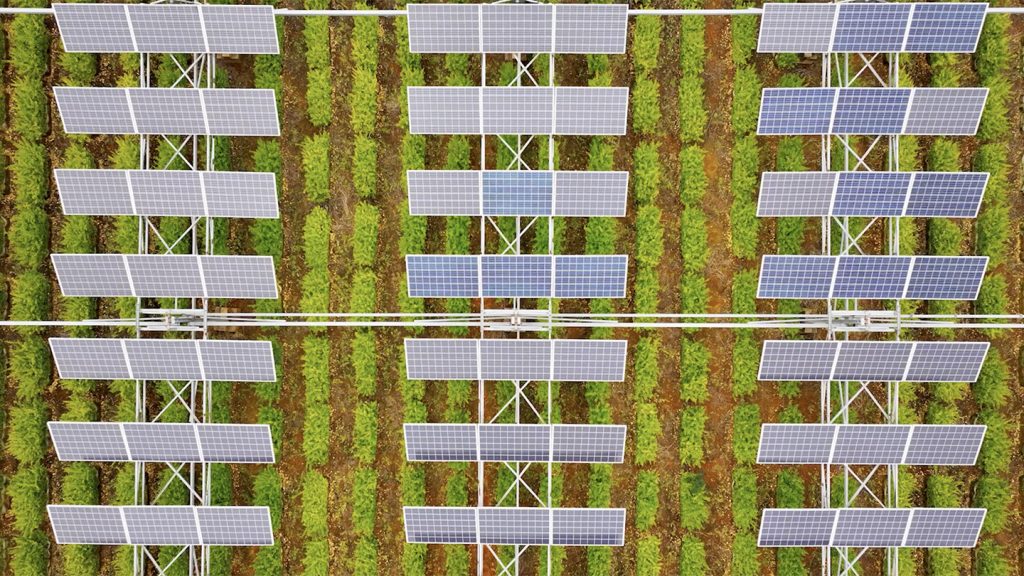Solar production in the US began to increase in 2012, leading to concerns about land use changes, particularly converting croplands for solar installations. The challenge then arises of combining farming and solar power production in a harmonious way that benefits both agriculture and renewable energy. Argivoltaics, the co-location of solar and agricultural activities, offers potential benefits for farmers, solar developers, landowners, and local communities. By utilizing land for both solar energy production and farming activities, it is possible to generate income, support crop production, create pollinator habitats, and restore ecosystems.
There is a growing consensus on the value of solar grazing, particularly for sheep under solar panels, as it improves soil nutrients, avoids erosion, and enhances carbon sequestration. However, the focus has primarily been on solar grazing and pollinator habitats, with limited exploration of crop production under solar installations due to unknown variables such as crop responses to shade and weather patterns. Challenges in crop production under solar panels include the need for modifications in engineering and design, such as panel height and spacing to accommodate traditional farming equipment and optimize energy production.
Despite the potential benefits of crop production under solar panels, there is hesitancy in the US market due to the tradeoffs between cost, energy production, and agricultural viability. Integrating solar energy with agriculture can be more challenging in certain regions and climates, necessitating careful consideration of system design, stakeholder interests, and environmental impacts. Research on argivoltaic systems in urban areas, such as abandoned parking lots, shows promising results in improving crop yields, particularly for leafy greens, and could provide valuable insights for sustainable agriculture near population centers.
Looking ahead, the next decade will involve further experimentation and data collection on different configurations of argivoltaic systems to inform decision-making on solar-agnostic systems that benefit both agriculture and renewable energy generation. This approach will require collaboration among different stakeholders, thoughtful planning, and consideration of environmental and economic factors to maximize the use of land for its highest benefit. By integrating solar energy production with agriculture, it is possible to address climate change goals, enhance food production, and create a more sustainable future for energy and agriculture.


